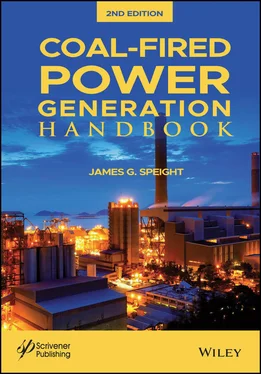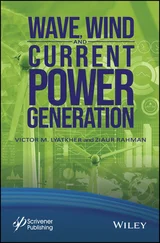However, there is need for caution. The large water and energy requirements for coal slurry pose a significant barrier to further deployment, especially in arid regions of Australia and the western United States.
The coal log pipeline is another technology for transporting coal in which coal at the mine site is treated and compacted into cylindrical shapes (coal logs) (Liu et al ., 1993). Then the coal logs are injected into an underground pipeline filled with water for transportation to destination which may be one or more than one power plants, or to a train station, a barge terminal, or a seaport, for intermodal transportation.
The coal must have been cleaned and crushed, with a binding agent comprised of coal pitch, bitumen, or wax. The coal mixture is then tightly compressed and compacted as coal logs that are 5% to 10% thinner than the transportation pipeline. The logs are injected into a pipeline and pumped along using water. The pipeline can deliver the coal to coal-fired electric power stations or coal storage areas. The coal logs must then be crushed for use in fluidized bed, cyclone, or chain-grate stoker coal-burning boilers or pulverized for use in pulverized-coal combustors.
Proponents of the coal log technology claim that in addition to being more cost effective than coal slurry, the capsule pipeline is also more environmentally sound because the coal logs eliminate coal dust erosion of the pipe interior and erosion of coal fines by rain at the power plant storage site.
Since coal must be relatively dry before it can be burned efficiently, so the coal must be dried after it arrives at the power plant. Coal transported as slurry requires drying and electricity generation will be substantially less if it is not dried effectively.
Coal logs do not require as much drying because they are packed so tightly that they do not absorb much water, and any water originally in the coal is squeezed out during compression.
Coal-carrying vehicles are typically end-dump trucks with a carrying capacity of roughly 25 to 50 tons. Truck delivery is used extensively for small power plants in the eastern United States.
Coal can be moved by truck over regular highways in vehicles with 15 to 30 tons capacity. Coal can also be transported by large off-road trucks with capacities ranging from 100 to 200 net tons. These trucks are almost always diesel-powered with back or bottom dump.
Specially constructed roads for coal hauling are extensively used for mine-mouth power plants in the west, south, and east, while the hauling of coal by trucks on highways is more concentrated at surface mines. Truck hauls on public highways in the United States typically range from approximately 50 to 75 miles while off-road hauls are approximately 5 to 20 miles.
Trucks are the most versatile of all transportation modes for coal hauling because they can operate over the widest areas where roads are available.
However, adverse environmental impacts resulting from truck coal hauling are coal dust particle releases during coal loading or unloading, and coal dust entrainment during transport. Some coal will escape from the trucks during transport because the loads are normally uncovered. The coal dust tends to wash off roadways during rainstorms, causing aesthetic unsightliness and contamination of runoff waters. The air pollutant emissions from diesel fuel combustion add to the emissions.
Ocean transport of coal requires a system of (i) transportation from the mine to the port, (ii) coal-handling facilities at the export port, (iii) ocean carrier networks with adequate number and size of ships, contractual obligations, management of the fleet, and route decisions, (iv) coal-handling facilities at the importing port, and (v) transportation from the port to the customer.
Ships are commonly used for international transportation, in sizes ranging from (i) handy size vessel, which is approximately 40,000 to 45,000 dead weight tons, DWT, a term normally taken to mean a vessel of approximately 10,000 to 40,000 DWT, (ii) a panamax-size vessel, which is approximately 60,000 to 80,000 DWT; technically, the maximum size vessel that can pass through the Panama Canal is restricted to a 105-foot beam, and (iii) a cape-size vessel which is capable of carrying >80,000 DWT; this is a vessel that is too large to transit the Panama Canal and thus has to sail via Cape of Good Hope from Pacific to Atlantic, and vice versa.
However, the ability of coal to variously self-heat (spontaneous ignition), emit flammable gases, corrode, and deplete oxygen levels has made the ocean transport of this commodity a particularly hazardous exercise. This is particularly the case in situations where loading is staggered or delayed and the potentially disastrous consequences of a shipboard coal fire can be realized.
Conveyor belts are normally used in mine-mouth power plants to bring coal from the mining area to the storage or usage area. Conveyor belts can be used for coal transport in hilly terrain where roads are relatively inaccessible, typically being used to move coal over distances of 5 miles to 15 miles.
Conveyors have the advantage of being relatively maintenance free but have the disadvantage of location inflexibility, making a truck haul still necessary. Movable conveyor belts have been developed and used. The only adverse environmental impacts of conveyor belts for coal transport are coal dust losses during loading, unloading, or transport.
Conveyor belts do not use water, except for belt cleaning; they can use plant electricity and do not require crude oil as the energy source. However, conveyor belts tend to be very energy-intensive. As a result, conveyor belt transport of coal has been limited to shorter distances.
Ali, A., Srivastava, S.K., and Haque, R. 1992. Studies on the Simultaneous Desulphurization and Demineralization of Coal. Fuel . 71: 835-839.
Aplan, F.F. 1993. Coal Properties Dictate Coal Flotation Strategies. Mining Engineering , 45: 83-96.
Arnold, B.J., and Aplan, F.F. 1989. The Hydrophobicity of Coal Macerals. Fuel , 68: 651-658.
ASTM. 2020. Annual Book of Standards. ASTM International, West Conshohocken, Pennsylvania.
ASTM D409. 2020. Standard Method of Test for Grindability of Coal by Hardgrove Machine Method. Annual Book of ASTM Standards . Section 05.05. ASTM International West Conshohocken, Pennsylvania.
ASTM D341. 2020. Standard Methods for Designating the Size of Coal from Its Sieve Analysis. Annual Book of ASTM Standards . Section 05.05. ASTM International West Conshohocken, Pennsylvania.
Barkley, J.F. 1942. Pointers on the Storage of Coal. Information Circular No. 7121, US Bureau of Mines, Washington, DC.
Baafi, E.Y., and Ramani, R.V. 1979. Rank and Maceral Effects on Coal Dust Generation. International Journal of Rock Mechanics and Mining Sciences and Geomechanics , Abstracts 16: 107-115.
Beier, E. 1990. In Bioprocessing and Biotreatment of Coal . D.L. Wise (editor). Marcel Dekker Inc., New York. Page 549.
Bensley, C.N., Swanson, A.R., and Nicol, S.K. 1977. The Effect of Emulsification on the Selective Agglomeration of Fine Coal. International Journal of Mineral Processing . 4: 173-184.
Bevan, R.R. 1981. Coal Cleaning. In Coal Handbook . R.A. Meyers (Editor). Marcel Dekker Inc., New York. Chapter 5.
Burchfield, J.W., 1993. Automated Flotation Control at Jim Walter resource, Mining Division. Proceedings. Tenth International Coal Preparation Exhibition and Conference, Coal Prep 93. Lexington, Kentucky, May . Page 159-168.
Читать дальше












